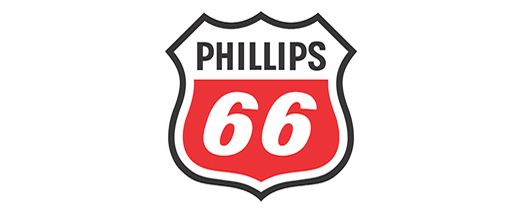Thousands of projects, decades of experience and real-world practical solutions all compiled into one place for your benefit. We are the go-to subject matter experts in all things pertaining to amine treating, gas dehydration and sulphur recovery. Explore our library of resources and reach out to us for further expertise.
Paper Spotlight
The 7 Deadly Sins of Sulphur Recovery
Gerald Bohme / John Sames
The availability of information regarding the operation and optimization of Claus sulphur recovery units has increased significantly over the past years. For individuals involved in the day-to-day operation of the Claus unit, however, the sheer volume of information can often be overwhelming, and it is difficult to determine what is of direct importance to the plant performance.This paper attempts to reduce the topic of sulphur plant optimization down to its basics. Viewed in this way, it can be seen that there are only seven key items that can reduce sulphur plant efficiency, the Seven Deadly Sins of Sulphur Recovery. Each of these sevens sins is analysed in detail, providing some indication of typical losses in each case based on test results obtained by Sulphur Experts. Additionally, “worst-case” examples from Sulphur Experts’ files showing the potential for efficiency losses in each of these cases are also presented. This paper can be used as a simple checklist by sulphur plant operations and engineers to determine the potential for efficiency losses in their own facilities and conversely the potential for optimization of recovery efficiency.
The 7 Deadly Sins of
Sulphur Recovery
Please enter your information in order to request our paper.
Popular Publications
Ammonia destruction in Claus Sulphur Recovery Units
Authors
The requirement for co-processing of ammonia-bearing streams in the Claus sulphur recovery unit continues to increase as evolving refinery operations result in more and larger gas streams contaminated with ammonia. The problems associated with incomplete ammonia destruction in the Claus thermal reaction furnace are well known and unfortunately all too common in the industry. In an effort to provide a more detailed “look” at this problem, an extensive set of field test data from Claus plant optimization tests completed by Sulphur Experts in many typically operating plants has been gathered and reviewed. This paper presents, in detail, the results from this data review and provides some new insight into how operating Claus plants in the “real world” perform.
How the Correct Rate-Based Simulator Saved the Platform from Shutting In
Authors
An offshore TEG dehydration unit was struggling with intermittent severe foaming episodes, resulting in a requirement to drastically reduce treating gas rates, which wreaked havoc on the downstream treating units. During an on-site troubleshooting visit, the cause of the foaming was determined and remediation steps were provided that eliminated any further foaming episodes, allowing for production at full plant capacity. The paper describes differences in treated water dewpoint predictions by historical graphing methods and rate-based modelling and the reason why the simulator predicted completely different performance than historical graphing methods, as well as the causes of and remediation of the intermittent foaming episodes in the unit.
Why Amine Systems Fail
Authors
Equipment malfunction or unplanned shutdown of an amine system can have a devastating effect on a production company’s profitability. The goal of this paper is to determine and focus the Gas Processing Industry’s attention on the highest probability threats to their facilities’ reliability. The threats were identified by analyzing 300 cases of amine system failures investigated by Amine Experts over the last 17 years for the root causes of the corrosion, foaming, hydraulic restrictions and specification problems that have limited or crippled gas processing facilities world over. The most prevalent causes of failure in amine systems, both in general and in gas processing specifically, are determined and strategies to prevent these are given.
Optimizing Ethylene Glycol Injection Refrigeration Plants
Authors
The use of glycols to prevent hydrate formation in the low-temperature hydrocarbon recovery process has many years of history behind it but, unfortunately, this historical background has not resulted in a true understanding of the basics of the process. These misunderstandings cover all aspects of the process from injection rates to nozzle placement and locations to system temperatures to the effect of solution quality on plant performance. This paper will attempt to address and clarify the misconceptions that appear to be so prevalent with this process.
Overcoming Operational Challenges in Sour Water Stripping
Authors
Sour Water Strippers (SWS) are used primarily to remove NH3 and H2S from refinery wastewater streams. As with any industrial process, there are challenges to keeping a Sour Water Stripper (SWS) unit on-stream and on-specification between shutdown periods. These challenges can be grouped as follows:
- Limiting fouling
- Maintaining treated water ammonium (NH4+) and total sulphur specification
- Managing corrosion
- Limiting hydrocarbon content of the off-gas
- Managing feed water quality
This paper covers the above operational challenges.
Review of Common Design Flaws in EG Refrigeration Plants and Their Operational Impact
Authors
The purpose of this paper is to identify the common fundamental design flaws in ethylene glycol (EG) refrigeration plants, the operational challenges associated with them and what can be done to remediate them. The paper is an extension and revision of the “Optimizing Glycol Injection Refrigeration Plants” paper presented at LRGCC in 1991. The use of EG for hydrate inhibition in refrigeration plants to recover NGLs is a common practice. In Canada, the construction of EG refrigeration plants has risen dramatically as a result of the recent economic demand for liquid hydrocarbons. However, as a result of some common misconceptions, many of the EG refrigeration plants built in the past 26 years have fundamental design flaws causing unnecessary initial and continual operation expenditures. This paper, with the help of a comprehensive case study evaluation, aims to highlight these flaws, their subsequent operational challenges and common recommendations to remediate them.
The Euroclaus Process
Authors
This paper includes a comprehensive overview of the Euroclaus® basics including the process layout, catalyst chemistry, actual installations and performance capabilities. In addition, based on 15+ years of Euroclaus® performance testing around the world, gathered plant data from the test work is presented and Euroclaus® performance reviewed. Various case studies are examined and discussed including the Euroclaus® installation at the Parkland Burnaby Refinery. The experience gained in optimisation through the testing and study of the process operations is presented in summary form and can be applied as a “how-to guide” using the key operating parameters in Euroclaus® operation.
War Stories from the Foaming Front
Authors
Amine solution foaming problems have been studied and reported extensively. However, direct correlations about the root causes of foaming have not been completely established. According to the latest available reports, surfactant contaminants are one of the main causes of amine foaming, leading to amine losses, off-specification treated gas, low unit throughput, ultimately causing unit downtime and lost revenues. This paper, however, focuses on foaming from a different perspective; rather than theoretical discussions, our topic is centred exclusively on field-related experiences with amine foaming episodes. The paper describes six different foaming-related cases we were involved in troubleshooting in various gas processing units. The paper also covers systematic approaches to foaming troubleshooting as well as a series of measures for foam minimization to ensure foam does not take place in the future.
Why Sulphur Plants Plug
Authors
The most common root causes of plugging include: soot formation from poor stoichiometry during fuel gas start-ups and shutdowns; ammonia salt formation from poor reaction furnace destruction or over-oxidizing process environments; alumina dust from refractory or catalyst fines in the process; iron-based corrosion products formed through a variety of corrosion mechanisms; and frozen sulphur from incorrect process temperatures or incorrect vessel and piping insulation or heating. The key to preventing plugging is to understand exactly how each of these mechanisms works, and then to avoid them through proper design, proper operating conditions, and proper procedures. If plugging does occur, some may be reversible online while others will require a plant shutdown. This paper covers each of these topics, using actual case studies and photographs from a variety of sulphur plants from around the world
Ammonia destruction in Claus Sulphur Recovery Units
Please enter your information in order to request our paper.
How the Correct Rate-Based Simulator Saved the Platform from Shutting In
Please enter your information in order to request our paper.
Why Amine Systems Fail
Please enter your information in order to request our paper.
Optimizing Ethylene Glycol Injection Refrigeration Plants
Please enter your information in order to request our paper.
Overcoming Operational Challenges in Sour Water Stripping
Please enter your information in order to request our paper.
Review of Common Design Flaws in EG Refrigeration Plants and Their Operational Impact
The Euroclaus Process
Please enter your information in order to request our paper.
War Stories from the Foaming Front
Please enter your information in order to request our paper.
Why Sulphur Plants Plug
Please enter your information in order to request our paper.
The Experts Network
We Have
More Videos























